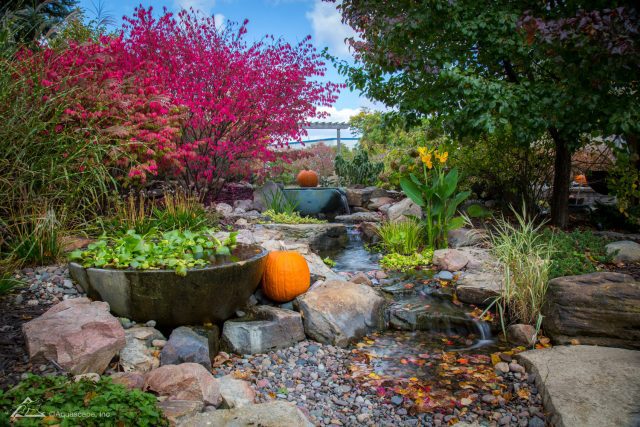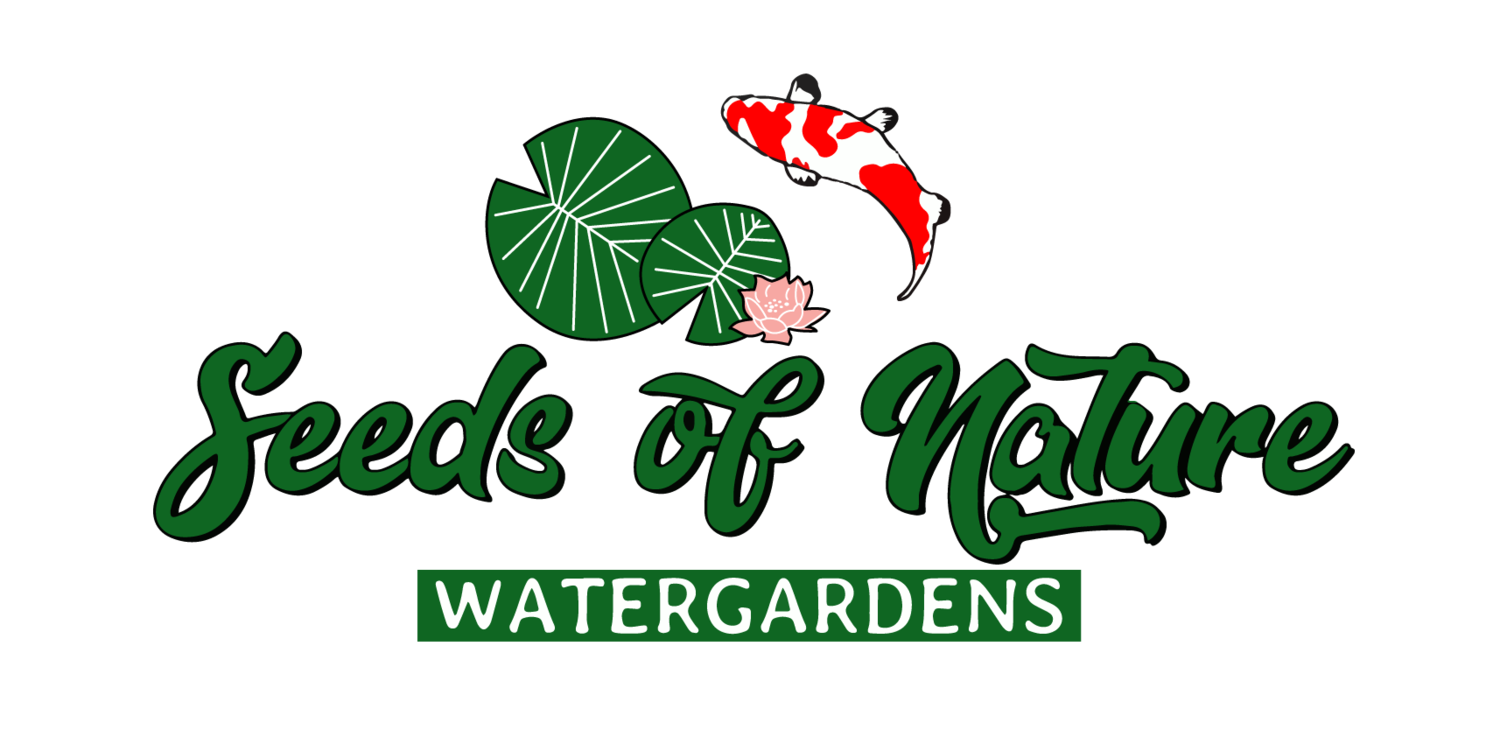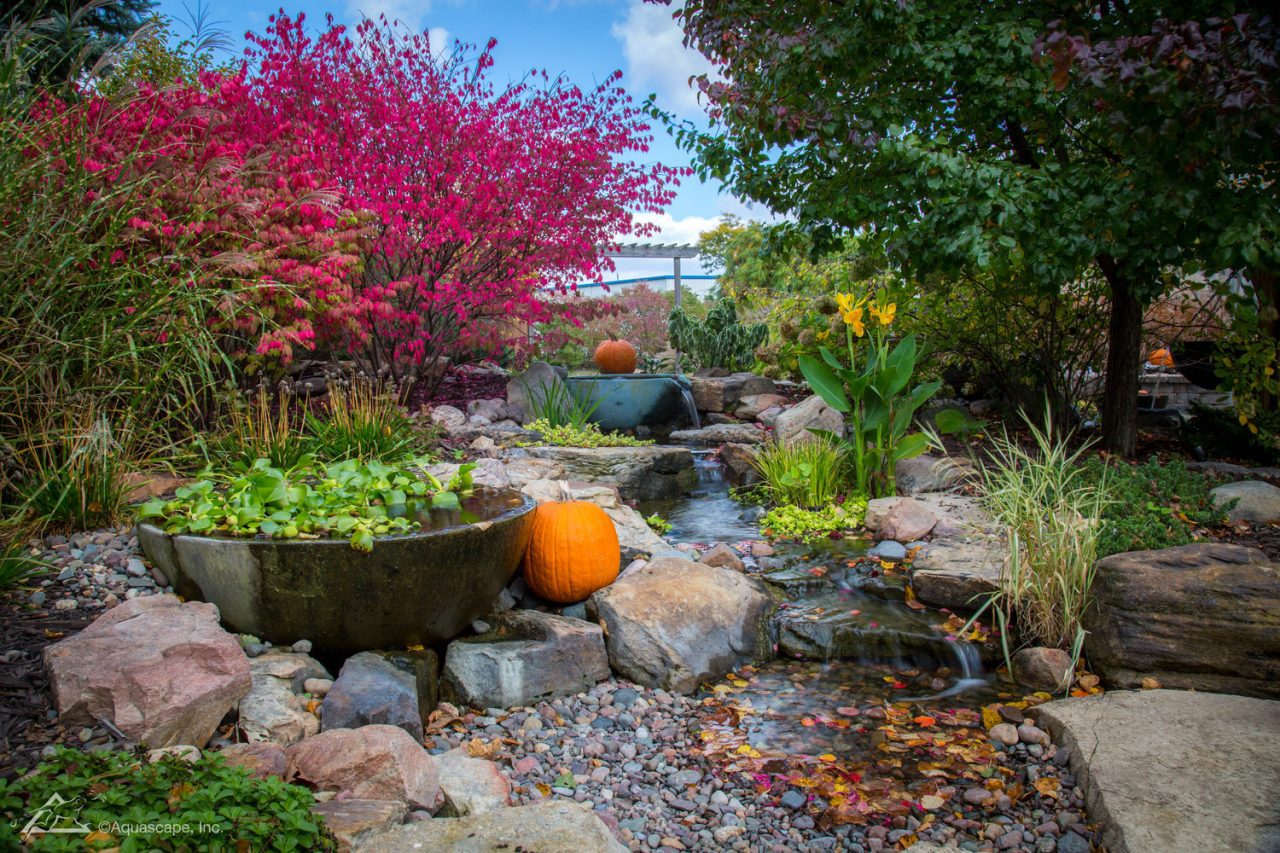
As the leaves start to change color and the temperature begins to drop, it’s time to prepare your pond for the fall season. Proper fall pond care is essential to ensure that your pond remains healthy and beautiful through the autumn months and into winter. In this article, we’ll discuss some essential maintenance tips to help you get your pond ready for fall in Grants Pass, Medford, Ashland, Roseburg, and everywhere in between!
1. Remove excess debris
Before fall sets in, it’s a good idea to remove any excess debris that may have accumulated in your pond over the summer. Use a pond net to scoop out leaves, twigs, and any other organic matter that could decompose and negatively impact water quality. If you have a lot of oak trees nearby, you will want to check your skimmer daily to make sure you aren’t impeding flow to your pump. This is precisely what the skimmer was designed for so make sure there is nothing covering up the opening to the skimmer. Otherwise all that leaf debris will get water logged and fall into the pond. I do not recommend doing a full on cleaning for your pond during this time. You will increase the chance of adverse water conditions during the winter months which could include diatom growth and string algae growth.
2. Trim and Prune Aquatic Plants
As the days get shorter and cooler, aquatic plants will begin to slow down their growth. It’s a good time to trim back any overgrown aquatic plants to prevent them from taking over your pond. Remove dead or decaying plant material to maintain water clarity and oxygen levels. When trimming down your plants, make sure you cut 6 inches above the root crown. Otherwise they might not make it back next year. Remove any tropicals from the pond once they die, since they will not come back next year. You can cut back water lillies to 3 inches above the crown. We can do this for you. Click here to contact us.
3. Check Your Pond Equipment
Inspect your pond equipment, including pumps, filters, and aeration systems. Ensure that they are in good working condition. Make sure that your aerators are not on the bottom of the pond. This is because you do not want to mix the lowest stratification of water with air temperatures. Once the water temperature is below 50 F you can rinse off the muck and detritus from your biofalls filters. The bacteria and organisms that live in this filter are becoming dormant so there is less of a risk of restarting the ecosystem. It’s also a good time to check for any leaks or damage to your pond liner. Make sure that your pond edges are tight and the slope away from the pond will divert any excess runoff from going into the pond. Once it starts raining it will be harder to fix this issue with the clay mud.
4. Adjust Fish Feeding
The metabolism of pond fish, like koi and goldfish, slows down as the water temperature drops. They go into a type of hibernation called Torpor. Be mindful of this change and adjust your fish feeding accordingly. As a general rule, feed them sparingly with non-protein foods. Once the water temperatures are below 50 F, stop feeding all together. If you do feed during these times the fish can not metabolize the food, and could get extremely sick. Typically they will stop feeding on their own, but it is imperative you do not tempt them.
5. Protect Your Pond from Falling Leaves
Falling leaves can be a nuisance in the fall, as they can quickly accumulate in your pond and create water quality issues. Oak leaves in our area are especially annoying as you probably know. Pine needles are equally exhausting. Consider using a pond net or cover to prevent leaves from entering the water. Regularly clean the net or remove accumulated leaves to maintain its effectiveness. If you would like us to do this for you, please reach out via our contact form here.
6. Add Beneficial Bacteria
Introducing cold water beneficial bacteria into your pond can help break down organic matter and prevent the buildup of sludge during the fall and winter months. These bacteria can be particularly helpful in maintaining water clarity and quality. We recommend installing an auto-doser that automatically puts these treatments into the water for you. Once water temperatures are below 40F we recommend stopping the treatment since the bacteria stop colonizing under this temperature.
7. Prepare for Frost
If you live in an area where frost is common during the fall, you’ll need to take precautions to protect your pond and its inhabitants. Consider installing a pond heater or aerator to keep a small opening in the ice to allow for gas exchange and prevent fish from suffocating. Typically, leaving the waterfall running is good enough. In some cases adding aeration to key areas will help depending on the size of the pond. Our area doesn’t see extreme weather to this extent, but it is always good to be prepared.
8. Plan for Winterizing
Lastly, start planning for the winterization of your pond. This may include removing delicate plants and placing them in a sheltered area, shutting down certain equipment, and insulating any pipes or plumbing to prevent freezing. As long as your pond was designed correctly there is no reason to be worried about freezing. We recommend keeping the waterfall and filters running year round due to the mild winters we receive here. But if you have circulation jets, we recommend shutting them down, detaching the pumps from the check valves, and either leaving the pumps sitting inside the pump vault, or taking them into a frost free location.
9. Winter interest
Since the days are getting shorter, consider installing some lighting into your waterfall. This way you can enjoy the pond from inside the home. We can help with this. Check out our lighting packages here. You can also contact us here.
By following these essential fall pond care tips, you can ensure that your pond remains a vibrant and healthy feature in your garden throughout the autumn season. Proper maintenance now will also make it easier to get your pond up and running smoothly when spring returns. Enjoy the changing seasons and the beauty of your fall pond!
Don’t forget to check out our socials:
Youtube
Facebook
Instagram
Tiktok

